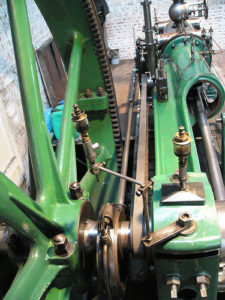 Plant equipment and machines require big capital investments. Thus, these should be selected and bought with utmost care. If wisely purchased and efficiently operated, capital equipment will generate profit for the businessman.
Plant equipment and machines require big capital investments. Thus, these should be selected and bought with utmost care. If wisely purchased and efficiently operated, capital equipment will generate profit for the businessman.
Purchasing procedures vary with the levels of approval required within a company, as well as with the sophistication and internal controls relating to asset acquisitions. They will also vary with the cost of equipment. In larger organizations, purchasing procedures ensure that financial resources are spent wisely and only on assets that are absolutely required to run the business efficiently.
If you have not yet set up your own set of procedures in your company, the following basic guidelines should be of help:
1. Determine your requirements. – Equipment purchase is always based on the needs of the business. You should be clear as to the intended use in order to make a good choice. This will help you avoid wrong decisions which can be quite expensive.
2. Be sure the purchase of the equipment is justified. This may be done through a cost-benefit analysis. Find out, too, about the payback period and see whether it is reasonable.
3. Determine the source of financing. Do you have funds internally available or would you need to borrow to finance the purchase? What is the most appropriate and cost-effective source of funding? Consider the possibility of leasing against buying, of buying used against getting brand new machines
4. Assuming the purchase of the equipment is justified and the funds are available (internally or through financing), a requisition is then generated. This includes specifications to make sure the equipment does the job, and defines special installation requirements such as power supply and floor support, as well as the associated cost. Remember too that requisition (and the ensuing purchase order) must be approved by a responsible person with the appropriate level of authority, who will also have checked that the company’s capital budget can cover the purchase.
5. Identify several reputable suppliers and ask for quotations. Compare the offers, determine strengths and weaknesses in terms of production efficiency. Identify which supplier offers the best value.
6. Prepare the purchase order in the name of the chosen supplier.
7. Follow up the purchase – Follow-ups should be done before, not after, the agreed-upon delivery date has passed. It is best to issue reminders – written or verbal – a certain number of days after the order is placed or before delivery is expected.
8. Be ready to receive the purchase – The item should arrive sometime near the due date in or near the receiving department or unit or personnel. The goods are then physically checked and a receiving report issued.
9. Process payment – Payment is usually done by the accounting department after it has received official word that all specifications have been met.
(Watch out for forthcoming articles on the more substantive, technical aspects of capital equipment purchase such as: the choice between general purpose and specific purpose machines; the choice between buying brand new or buying used equipment; the factors to consider in selecting suppliers; the concept of equipment depreciation; etc.)
Photo: “Machine Crépelle” by Frédéric BISSON, c/o Flickr. Some Rights Reserved
